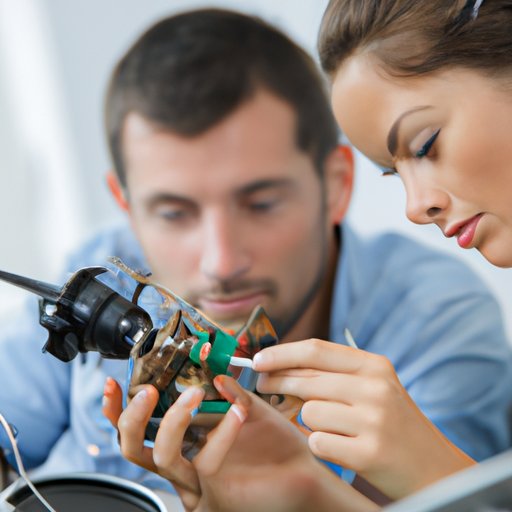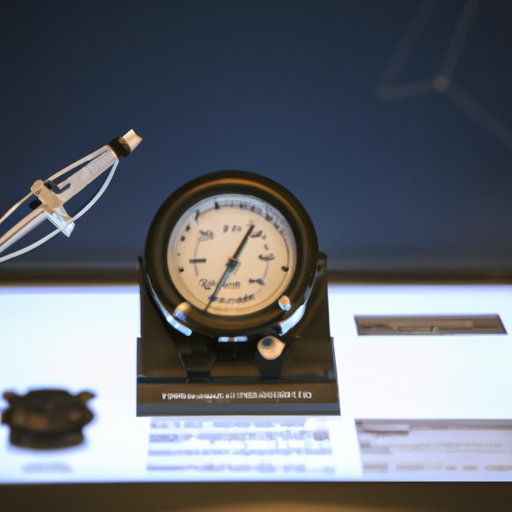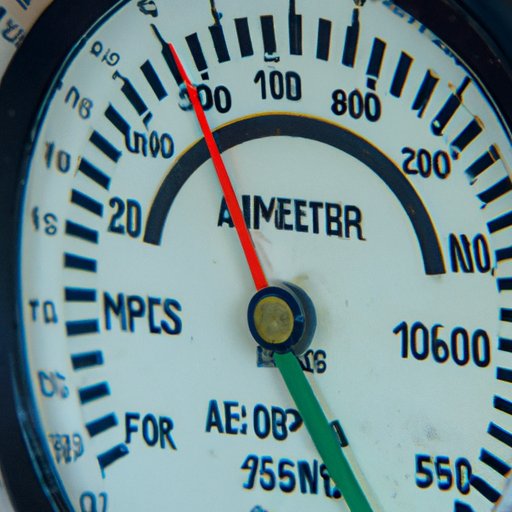Introduction
An altimeter is a device used to measure altitude, or the height above sea level. This type of instrument is commonly found in aircraft and other vehicles that travel at high altitudes, as well as in watches and compasses. Understanding how altimeters work is important for pilots, hikers, and anyone else who needs to know their location and altitude.
How Altimeters Measure Altitude
The mechanics of an altimeter are relatively simple. The device measures changes in atmospheric pressure to determine altitude. As the altitude increases, the air pressure decreases. By measuring the changes in air pressure, the altimeter can calculate the altitude.
The altimeter works by comparing the external pressure with a calibrated reference pressure. The reference pressure is set with a knob on the side of the altimeter. When the knob is turned, the internal mechanism adjusts the reference pressure. The altimeter then reads the difference between the two pressures, and displays the altitude on a dial or digital display.

Taking a Closer Look at the Altimeter Components
At the heart of the altimeter is a Bourdon tube, which is a curved tube filled with pressurized fluid. When the tube is subjected to external pressure, it bends, and the movement is translated into a mechanical reading. This reading is then displayed on the altimeter’s dial or digital display.
The altimeter dial is divided into increments of altitude, ranging from 0 to 10,000 feet. The dial also has markings for thousands, hundreds, tens, and ones. The digital display is usually a numerical readout, but some models also include a graphical representation of altitude.
A Guide to Setting and Adjusting Altimeter Settings
In order for an altimeter to provide accurate readings, it must be set and adjusted correctly. To do this, you need to first select the correct altimeter setting from the available options. For example, you can choose to measure altitude in feet or meters, or to use standard or local barometric pressure.
Next, you need to adjust the altimeter setting. This involves turning the adjustment knob until the altimeter reads the current barometric pressure. Then, when the altimeter is set correctly, it can accurately measure altitude.

Exploring Altimeter Technology: Historical Development and Modern Applications
Altimeters have been around since the early 1900s, when they were used to measure the altitude of aircraft. Over time, the technology has been refined and improved, and today altimeters are used in a variety of applications. They are used in aircraft, helicopters, drones, cars, boats, and even watches and compasses.
Altimeters are also used in meteorology, geology, and other fields to measure the elevation of landforms, such as mountains and valleys. In addition, they are used in search and rescue operations to locate people or objects in mountainous or remote areas.
Conclusion
Altimeters are an essential tool for anyone who needs to measure altitude. By understanding how altimeters work, it is possible to make sure the device is set and adjusted correctly, and to get accurate readings. Altimeters have come a long way since their invention in the early 1900s, and today they are used in a wide range of applications, from aircraft to watches and compasses.
Understanding altimeters is important for pilots, hikers, and anyone else who needs to know their location and altitude. With the help of this article, you now have a better understanding of how altimeters work and how to set and adjust them for accurate readings.
(Note: Is this article not meeting your expectations? Do you have knowledge or insights to share? Unlock new opportunities and expand your reach by joining our authors team. Click Registration to join us and share your expertise with our readers.)
